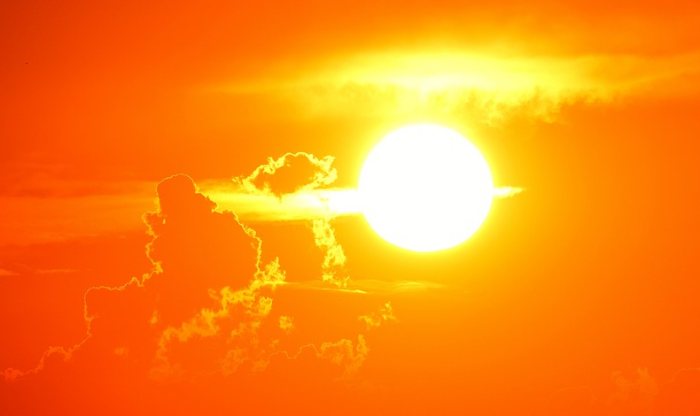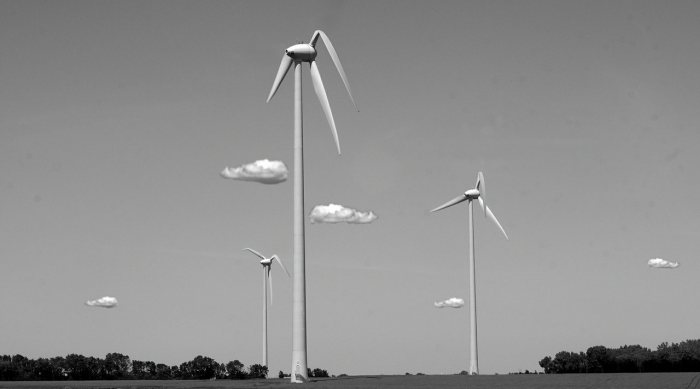
Image: Alexas_Fotos
A new report has again confirmed that Victoria’s Australia Day long weekend blackouts had nothing to do with renewables or a lack of energy supply, and has made recommendations to avoid a re-occurrence.
On 28 and 29 January 2018, Victoria experienced widespread electricity outages that resulted in a total of 94,712 customers losing power for varying durations. The situation was potentially life-threatening – 1,218 customers affected had life support equipment at their premises.
The events saw some quick to blame renewable energy and the loss of the coal-fired clunker Hazelwood Power station, but neither was the culprit.

During Victoria’s January heatwave, this didn’t happen – Image: marc-hatot
The outages were due to a failure of the network to meet high demand (reaching around 9,100 megawatts at one point) as Victorians sought to cool their homes and businesses during the heatwave, during which temperatures in Melbourne on the Sunday reached just shy of 38C, rising to the 40’s in many regional areas.
While Victoria had access to reserve capacity at all times, outages were mostly caused by overloaded fuses in residential areas, a cable failure in the Bellarine Peninsula and a substation fault at Anglesea.
Victoria’s Minister for Energy Lily D’Ambrosio yesterday released the State Government’s review of the event that contains 15 recommendations to prevent similar occurrences from happening in the future; recommendations that electricity distribution businesses in the state have committed to implementing.
“Distribution businesses need to plan more carefully for heatwaves and make sure their networks are more reliable and resilient before next summer,” said Minister D’Ambrosio.
The general themes of the recommendations include:
- Implementing demand side responses to address network constraints. Demand side response can include providing financial incentives to customers to lower or shift their electricity use at peak times.
- Increased Distribution Network Service Provider (DNSP) communications with customers before potential events and during and after outages. This will include a single website for Victorians that will provide up-to-date information.
- Increased use of smart meter data and improved demand forecasting.
- Regulatory studies and assurance audits to ensure fulfillment of customer service and entitlement obligations.
With regard to smart meter data analysis and demand forecasting, this will need to take into account all impacts on demand, such as the late afternoon reduction of solar power generation production that coincides with the start of residential peak demand periods.
The Post Event Review Report can be downloaded here.
In other news out of Victoria, something that will certainly make good use of sunny days ahead is the state’s second large-scale solar farm, which has been officially opened according to RenewEconomy. Swan Hill Solar Farm is expected to produce 37,700 MWh in its first year of operation. The project is Impact Investment Group’s largest investment in a single solar farm to date.

 RSS - Posts
RSS - Posts



Thi sounds like justification for all households (and, businesses and government institutions) having both the maximum possible capacity rooftop photovoltaic system connected to storage batteries for each such installation, to provide for both demand and supply smoothing, and, for backup in the event of grid supply failure.
And, mainataining the SRES subsidy rate at its current level, whilst providing for interest free loans to homeowners, to install such systems, would probably be cheaper than investing in new, or expansions of existing, combustion-based power stations (and, better for the environment and public health, which also reduces money spent on public health).
Ah, if only legislators at each level, would be concerned with the interests of the people of their jurisdicitions, rather than lining their own pockets with loot.
There needs to be a more honest discussion about the proliferation especially refrigerative air conditioning systems and the failure of home builders to use passive cooling in the designs of houses.
I am aware of homeowners installing air conditioning systems rated up to 9kW, when in all honesty an evaporative system that consumes probably a little over 1kW is sufficient.
The question needs to be asked whether the expectation to be able to consume as much as you want is right. Also, the question needs to be discussed as to whether those who consume in such high volume put more vulnerable consumers – such as those requiring electricity for life support systems – at risk.
My brick and tile 2 bedroom bungalow in the Hills behind Perth was built in the mid 1970s and I purchased it in 2009, after renting it for about 8 years. In summer it was almost unbearably hot (reaching over 36 degrees indoors) and in winter was down to 12-13 degrees C. Over the next 8 years I installed fibreglass batts in the roof space, put an enclosed (but semi-transparent) patio on the western side, double glazed the entire house bit by bit, installed 3.2 kW of solar panels and finally about 11 kWh worth of batteries. In installing the double glazing I specified that a circular hole (with a plug) be cut in the western door which was the same size as the heat exhaust hose on a wheel-around refrigerated air cooler. So in February 2018 although there were about 5 consecutive days with max outside temperature of 44 degrees, the internal temperature hovered round 26-27 degrees. While the solar panels provided sufficient power to run the air cooler (it draws a max of about 12 kW) .and still maintain the batteries at full charge by end of day, the house was also exporting power to the grid.
As a side benefit, on a “good” day the cooler can produce up to 10 litres of condensed water which can either be put through my filter/ sterilising system for consumption or stored into my rainwater tanks for later use.
The house uses no non-renewable energy for heating other than a gas stove and gas booster for the solar hot water system for a couple of months of the year. The patio, with a section of transparent roofing and concrete floor, acts as a heat trap in winter, and helps warm the rest of the house by the simple expedient of opening the back door, and letting the cold air flow out.
I certainly would not recommend evaporative cooling, not least because of its proven fire-hazard in prone areas.
Whoops! Noticed I missed a decimal point!. The air cooler draws 1.2 kw, NOT 12 kW.
We followed a similar path. Buying an energy disaster and gradually improving its performance. An asbestos roof meant an evap was not an easy option.
We have a reverse cycle heat pump that seldom gets used.
I’m about to install one of these on our solar HWS and hope to avoid electrically boosting in Winter. Just picked up 1kWp of used solar for $300 to use with it.
https://www.commodoreaustralia.com.au/product/solar-hot-water-booster/
Geoff – I think that you oversimplify the air-condiitioning aspect, too much.
You conspicuously omit where you are resident.
We have a ducted rooftop evaporative air conditioner, which is good most of the time, but not when we have humid heat, and it lets cold air in, in the winter. We are lucky in one respect – the climate here, is classed as temperate. From what I understand, in tropical areas, like Queensland, big, powerful, ducted, refrigerative, airconditioning is needed.
Of course, all houses and buildings that have refrigerative air conditioning, should be required to have the maximum possible capacity rooftop photovoltaic systems, to counter their electricity demand.
But, building standards in Australia, are shonky, and, unsafe, and appear to have not advanced much since tin shacks were the norm.
All buildings should have eaves that provide shade to all window area during the summer. All windows should be double glazed. Window area should be about (as near as practicably possible to) ten percent of floor area. All ceilings should be (relatively) safely insulated, to at least R3. All walls should be cavity masonry (brick or concrete) or otherwise packed with fire safe and chemical safe, insulating material. And, regarded a fundamental aspect of safety, both electrical and otherwise, all gutters should be required to be replaced with gutters with which, the edge further from the building, is lower that the edge closer to the building, rather than the current design, which is designed to cause excess water (and, where gutters are not maintained through cleaning of obstructions) to run into the building, and, especially, to flood electrical wiring.
Yes, building standards in Australia, are shonky and unsafe, and, designed to be wasteful of energy.
Michael, looking at the picture about SA electricity prices in 1892, I noticed that TA was spruiking the use of coal to generate gas for lighting!
The more things change,the more they remain the same.
Well, Victorians do have those new fangled “smart” meters. They should be using them for demand side management at the very least.
In the meantime, surely it would be cost effective to get every customer with life support equipment some solar and storage, than trying to increase the grid to 100% reliability.